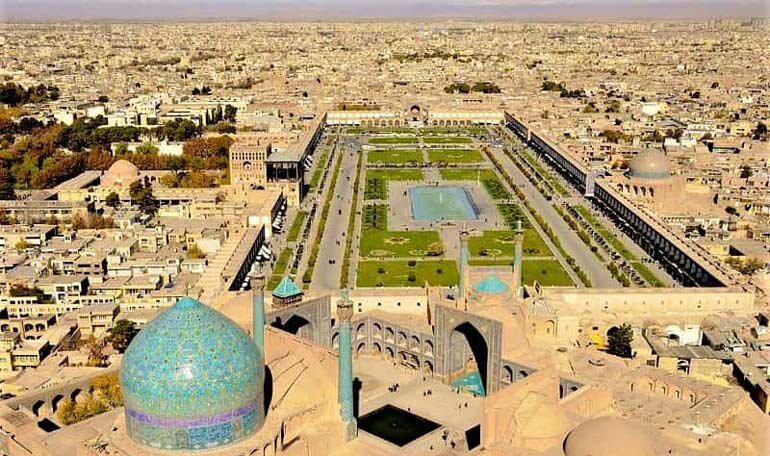Historical texture around Naqsh-e Jahan Sq. to undergo restoration

TEHRAN – Isfahan province’s tourism chief Amir Karamzadeh has announced plans to restore and revitalize the historical areas surrounding the southern and eastern sections of the UNESCO-registered Naqsh-e Jahan Square.
During a visit to the site on Monday, Karamzadeh and a team of officials from the provincial Cultural Heritage Department evaluated the historical texture of this significant zone.
“The department has devised a comprehensive and scientifically-grounded plan to rehabilitate all lands, structures, and historical houses in this area,” the official stated. “Each will be assigned a tourism-oriented function.”
As part of this initiative, these heritage sites will be incorporated into the province’s tourism investment platform. They will be packaged as investment opportunities and presented to interested stakeholders in the tourism industry.
Naqsh-e Jahan Square, located in the heart of Isfahan, is one of Iran’s most iconic heritage sites. Registered as a UNESCO World Heritage site, it attracts millions of visitors annually with its rich history and architectural splendor.
Meanings “Image of the World,” is one of the largest city squares globally and serves as a breathtaking example of Iranian architecture. Its vast expanse and harmonious design invite travelers to embark on a journey through history, culture, and art that transcends time.
Constructed under the visionary order of Shah Abbas I in the early 17th century, Naqsh-e Jahan was the heartbeat of the Safavid Empire.
With dimensions of 560 meters in length and 160 meters in width, the square covers nearly nine hectares, making it a colossal centerpiece of the Safavid capital. It was here that culture, religion, economy, and politics intertwined seamlessly, forming the nucleus of Persian socio-cultural life.
The square’s design embodies a harmonious urban ensemble, with each side graced by four iconic structures, each telling a story of its own: the Sheikh Lotfallah Mosque on the east side; the Ali Qapu Pavilion on the west; the Portico of Qeyssariyeh to the north; and the Royal Mosque (Masjed-e Shah) to the south.
These magnificent edifices, adorned with enameled ceramic tiles and intricate paintings, create a breathtaking panorama that captivates visitors from the moment they step foot onto the square’s sandy esplanade.
The ancient city of Isfahan, situated at the crossroads of Iran’s north-south and east-west trade routes, reached its zenith between the 9th and 18th centuries. During the Safavid era, it became Iran’s capital under Shah Abbas the Great.
Moreover, the ancient city was once a crossroads of international trade and diplomacy in Iran and now it is one of Iran’s top tourist destinations for good reasons. It is filled with many architectural wonders, such as unmatched Islamic buildings, bazaars, museums, Persian gardens, and tree-lined boulevards. It’s a city for walking, getting lost in its mazing bazaars, dozing in beautiful gardens, and meeting people.
The Persian proverb “Isfahan nesf-e-jahan ast” (Isfahan is half the world) reflects the city’s cultural and historical prominence.
AM
